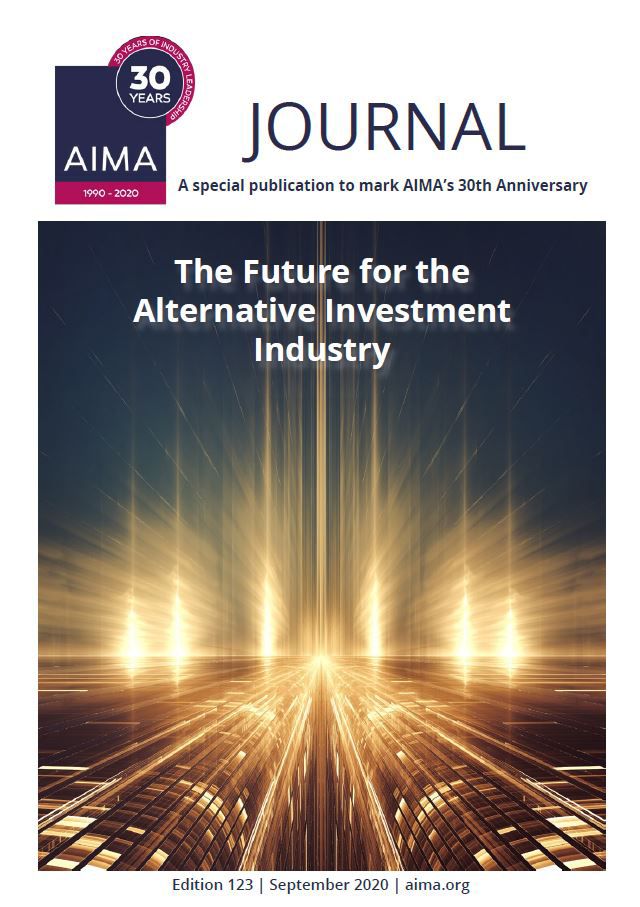As the new decade dawned, the future of the Alternative Investments sector seemed fairly certain. Fund managers would continue to shift data and processes into the cloud. Digital technologies – such as AI and Machine Learning – would prove their value at the largest firms and gradually be adopted across the sector.
A handful of large players would convert their proprietary systems and tools into industry platforms, capitalizing on the demand for scalable middle and back-office infrastructure and processes.
The emergence of the COVID-19 did not change the importance, but rather it did quickly sharpen minds and add urgency to the technology agenda. Those without efficient and effective digital data platforms quickly realized their ability to operate was being constrained.
Efforts to run operations in a more decentralized environment during the lockdown only accentuated the urgent need for change.
Important technology questions reemerged onto the Alternative Investment agenda: How will we combine and communicate key data sources – such as trading data, research data, risk management data and investor data – in a decentralized work environment?
How can we leverage technologies such as AI, Blockchain, Machine Learning and digital payment solutions to both generate alpha and improve the investor experience in a digital world? And where will we find the capital and the technology skills we require to achieve our objectives?
The new reality emerges
The COVID-19 experience was an awakening of sorts. On the back of what seemed like an endless bull market, most asset managers had convinced themselves they had time to catch up on the digitization agenda.
Now that runway has disappeared. Those with a 5 to 8 year transformation journey are scrambling to expedite their timelines.
The problem is that, for most, the journey may require considerable investment. And few firms have the skills and capabilities in-house to drive and scale a successful digital transformation agenda.
That, in turn, has driven many firms to reconsider their operating models. Some are now working with outsourcers. More are flocking towards the bigger technology providers and the large industry platform providers who are offering scalable processes and tools to the industry.
It will be the firms that strategically deploy investments in digital tools and capabilities that will reach their accelerated targets. And they will be the successful and innovative ones that lead the sector in the future.
Stepping on the gas
Don’t expect all technology decisions to be outsourced or delegated to the platform players, however. Many fund managers are also working to rapidly build their own internal capabilities. Most now recognize that cloud is the foundation for future digital transformation.
Those with some processes or data still residing on their own ‘on premise’ computers and servers will be looking to move them offsite – both as a way to reduce complexity, and to provide managers and employees the integrated data they require to do their jobs and generate alpha.
Others are now quickly assessing the value of automation and artificial intelligence. They are looking for tools and technologies that can enhance their digital channels and improve the investor experience.
For example, they are testing new RegTech solutions to help improve compliance and back office efficiency. And they are spending on new virtualization and collaboration tools designed to better connect their employees to their clients, each other and the enterprise.
To be sure, there will be a number of fund managers who, finding themselves hindered by margin constraints, may choose to reduce investment into new technology initiatives.
However, our view suggests these firms will struggle to effectively compete in the new digital world that is emerging from the COVID-19 experience.
Rather, it will be the firms that strategically deploy investments in digital tools and capabilities that will reach their accelerated targets. And they will be the successful and innovative ones that lead the sector in the future.
The leading fund managers know it will take more than investment capital to achieve digital transformation.
Having a vision
The leading fund managers know it will take more than investment capital to achieve digital transformation. Indeed, our view suggests the top firms in 2030 will be those that view technology as an enabler of future growth. And that will require a more holistic view of the transformation journey.
It will start with a fundamental rethink of the business model, operating model and value proposition. Fund managers will need to carefully consider what activities will differentiate their firms from the competition and what activities can be better (or atleast equally) delivered through automation or outsourcing.
Fund managers will also need to take some time to understand the new and evolving expectations of their clients. They, too, have undergone a radical digital transformation as a result of the response to COVID-19; they will increasingly expect sophisticated digital channels and will look unfavorably on those that seem out of step with the competition.
As ever, mid-office and back-office processes – regulatory, trading execution, treasury, finance, risk and compliance, for example – will need to be reimagined and redesigned in order to enable the future business and operating models.
But by 2030, we expect the big tech players and asset management platform providers to be delivering many of these processes as a service, allowing most fund managers to refocus on their core differentiators.
The most aggressive and innovative fund managers will also see this as an opportunity to fundamentally reinvent the alpha generation process.
They will be looking at innovations in AI, IoT, 5G technologies – as well as emerging technologies such as Edge Computing and Quantum Computing – to uncover new ways to gain the trading advantage over their peers and competitors.
Get there. Now.
As we look forward to the next decade, the future of the Alternatives sector remains fairly clear. By 2030, the cloud conversion process and the centralization of data throughout the operating platform will have been completed.
Non-core activities will be either automated or outsourced to increasingly powerful platform players. Workplaces will be more virtualized.
The difference is that this is no longer the vision for 2030, but rather the new reality for 2025. Welcome to a future accelerated.
Linda Johnson
Partner, Advisory
KPMG Crown Dependencies
Kristan King
Partner, Advisory
KPMG Crown Dependencies
Mark Ashburn
Director, Advisory
KPMG Crown Dependencies
Connect with us
- Find office locations kpmg.findOfficeLocations
- kpmg.emailUs
- Social media @ KPMG kpmg.socialMedia

Article originally published in The Alternative Investment Management Association’s AIMA Journal – “A special publication to mark AIMA’s 30th anniversary: The Future for the Alternative Investment Industry”.

